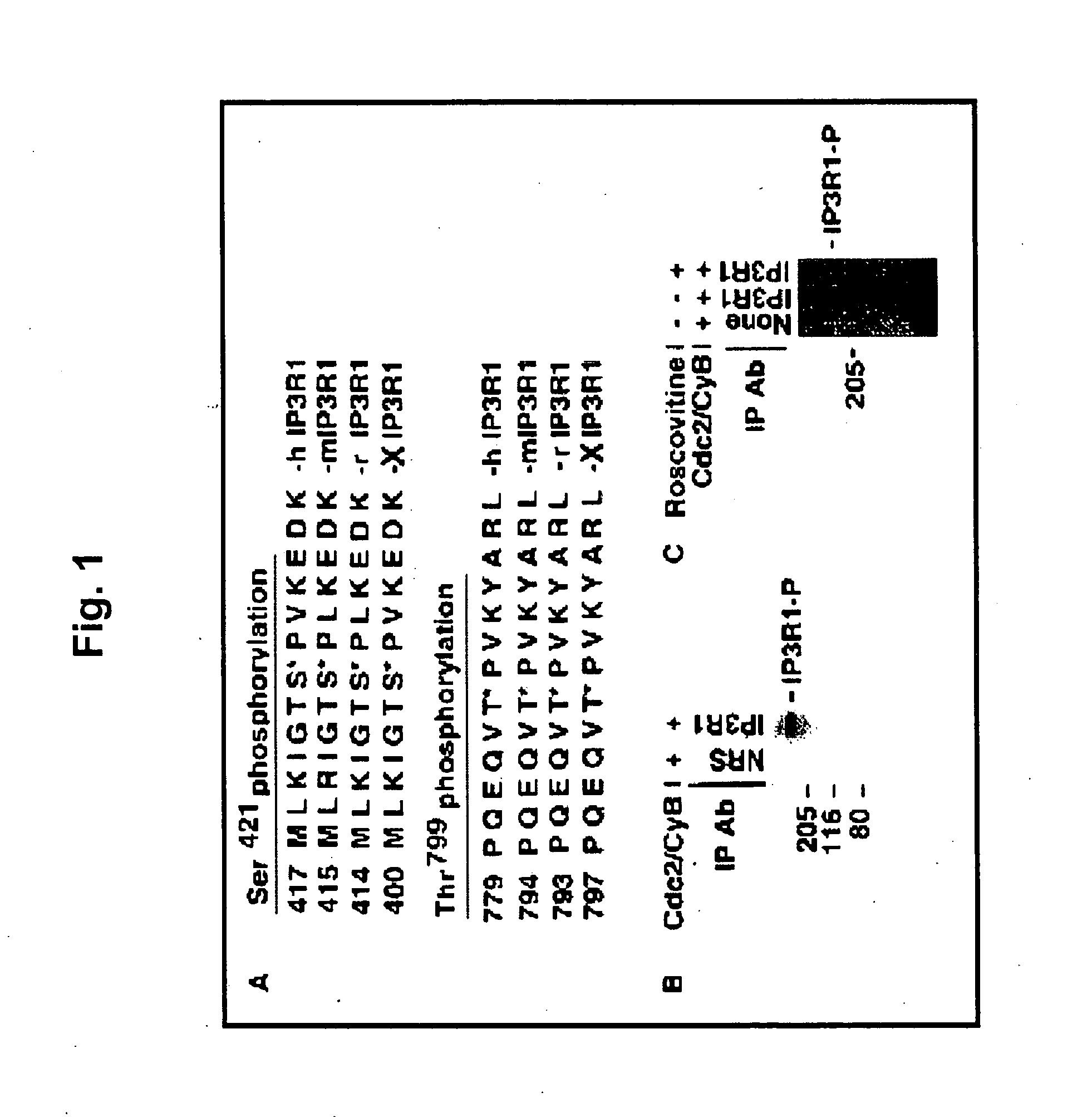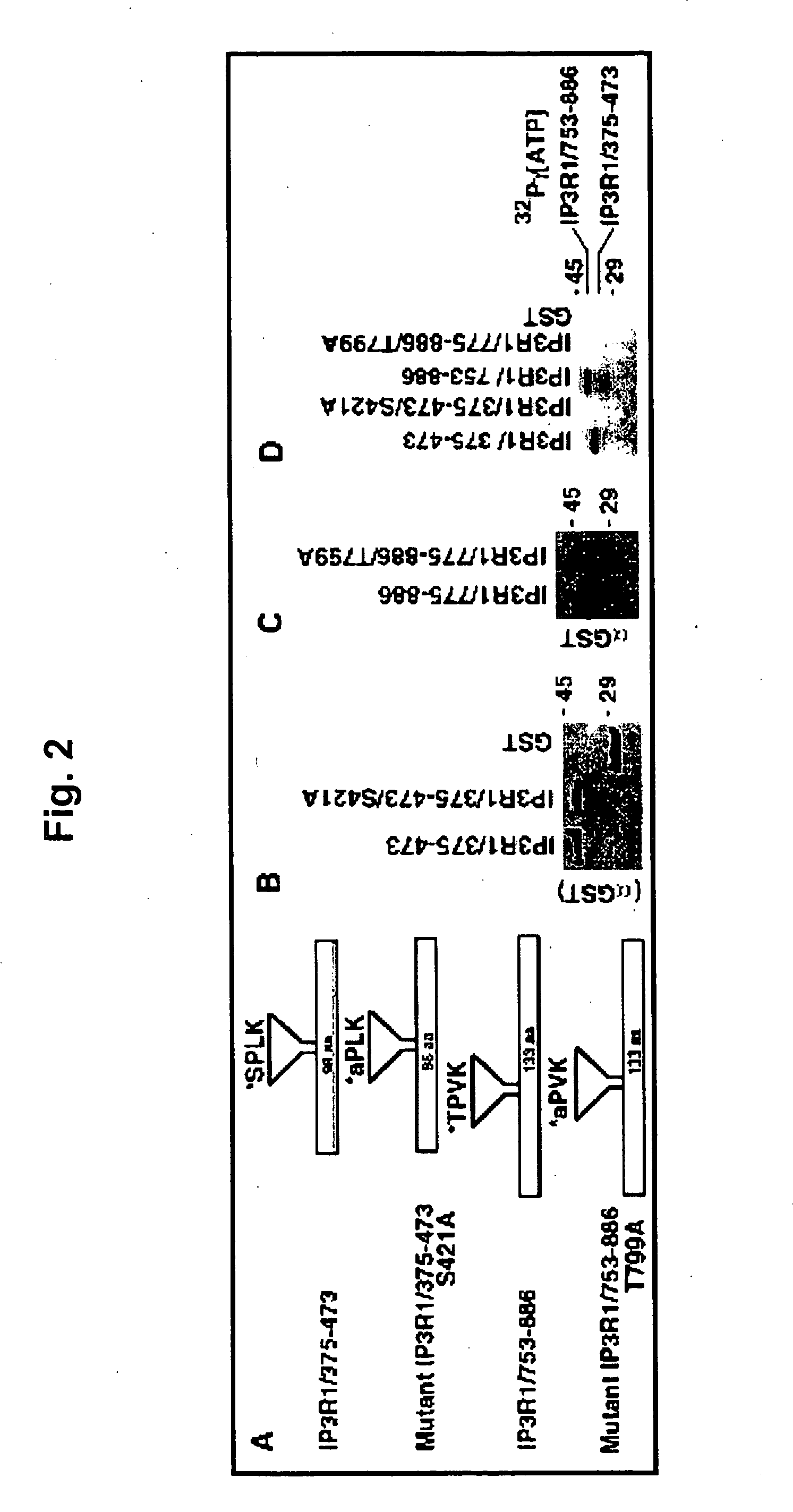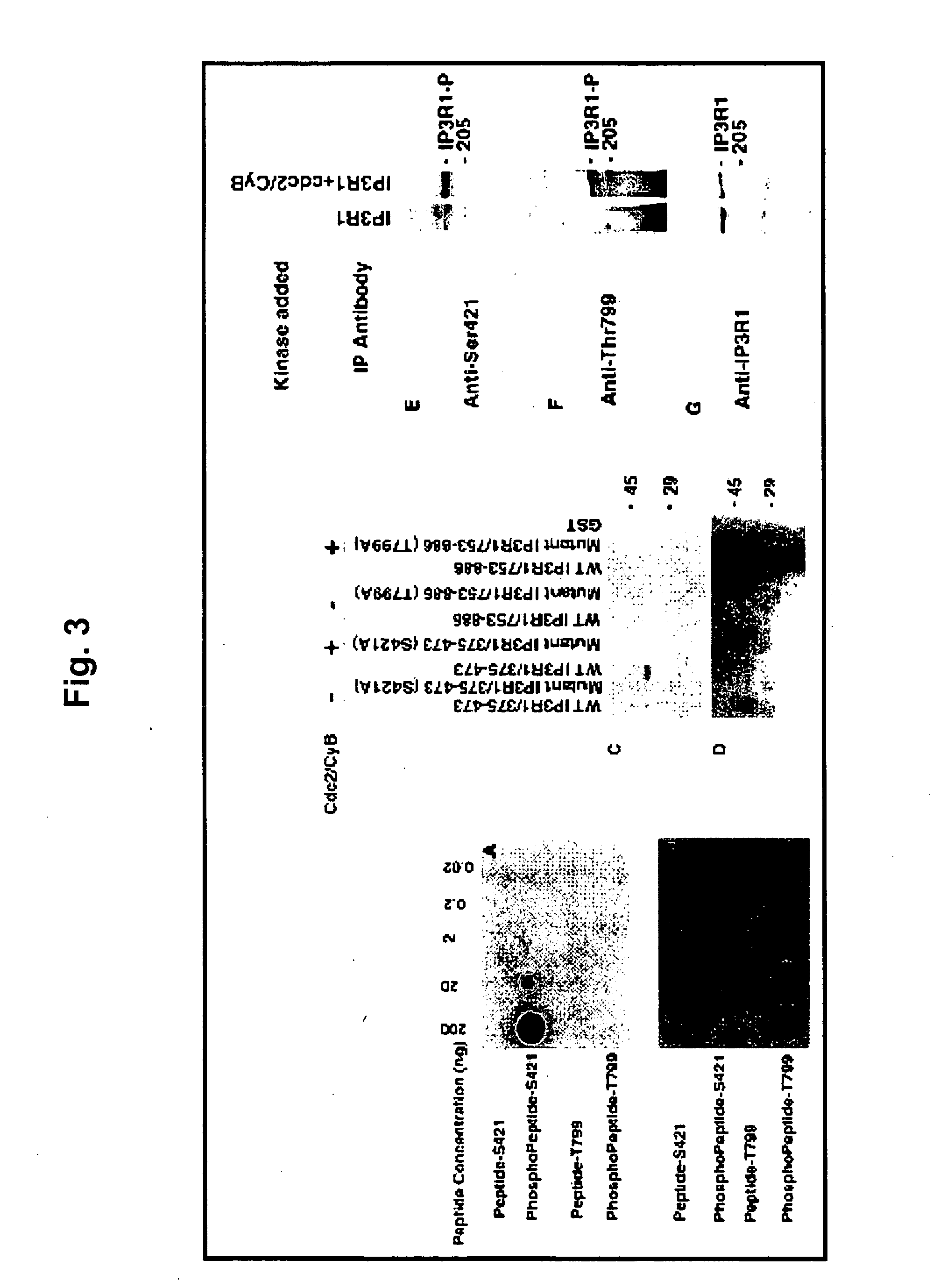Inositol 1, 4, 5-triphosphate receptor (type 1), phosphorylation and modulation by CDC2
a technology of inositol and ip3r1, which is applied in the field of inositol 1, 4, 5triphosphate receptor (type 1), phosphorylation and modulation by cdc2, can solve the problems of increasing casup>2+, and achieve the effects of increasing intracellular calcium, enhancing ip3r1 phosphorylation, and enhancing cyb binding to ip3r1
- Summary
- Abstract
- Description
- Claims
- Application Information
AI Technical Summary
Benefits of technology
Problems solved by technology
Method used
Image
Examples
example 1
Methods
Cell Culture and Reagents
[0045] The human leukemic T cell line, Jurkat cells (Clone E6.1 from the American Type Culture Collection), was cultured in RPMI medium containing 10% FBS and 100 units / ml penicillin and streptomycin. The cells were split every 2 days to maintain log phase cultures. Antiserum to IP3R1 was kindly provided by Dr. Greg Mignery (Loyola University, Chicago, Ill.). Human recombinant cdc2 / CyB and nocodazole were obtained from CalBiochem (La Jolla, Calif.).
Generation of Phosphospecific Antibodies to IP3R1
[0046] Polyclonal antibodies were raised against two phosphopeptides (MLKIGTS*PVKEDKEA and DPQEQVT*PVKYARL) that encode the putative phosphorylation residues at Ser421 and Thr799, respectively. The polyclonal antibodies were affinity-purified with two cycles of purification by initially passing through non-phosphorylated peptides and finally through the respective phosphorylated peptides. Titration and specificity of phosphospecific antibodies were dete...
example 2
[0064] The benefits of a therapy involving a pharmaceutical composition comprising an IP3R1 antagonist for treating neurodegenerative diseases such as Alzheimer's disease can be demonstrated in a rodent model of Alzheimer's disease.
[0065] An established rat model if Alzheimer's can be used and three groups of young adult rats can then be studied: (1) Alzheimer's+IP3R1 antagonist; (2) Alzheimer's without IP3R1 antagonist; and (3) Alzheimer's+placebo treatment. The rats' ability in performing learning and memory tasks can be tested and behavior can be directly monitored. After approximately 10 weeks of therapy, rat brains can be harvested and analyzed.
[0066] It is expected that the results of the study will demonstrate the general benefits of therapy utilizing IP3R1 antagonist for treatment of Alzheimer's disease. Rats from groups 2 and 3 should demonstrate significantly impaired ability in performing learning and memory tasks compared with group 1 rats. It is also expected that the...
example 3
[0067] The benefits of a therapy involving a pharmaceutical composition comprising an IP3R1 agonist for treating tumors can also be demonstrated in a mouse tumor model.
[0068] Young adult mice can be injected with a tumor, e.g., a mouse sarcoma MCA205 or mouse melanoma B16B16, and three groups of rats can then be studied: (1) Tumor+IP3R1 agonist; (2) Tumor without IP3R1 agonist; and (3) Tumor+placebo treatment. Tumor growth can be monitored throughout the approximately 6 week period of therapy.
[0069] It is expected that the results of the study will demonstrate the general benefits of therapy utilizing IP3R1 agonist for treatment of tumor cells. Mice from group 1 should demonstrate a significant reduction in the growth rate of tumors as compared to mice from groups 2 and 3. Accordingly, rats treated with IP3R1 agonist (group 1 mice) will demonstrate the most improved general health parameters and least evidence of tumor growth as compared to mice receiving placebo (group 3) or no I...
PUM
| Property | Measurement | Unit |
|---|---|---|
| pH | aaaaa | aaaaa |
| pH | aaaaa | aaaaa |
| pH | aaaaa | aaaaa |
Abstract
Description
Claims
Application Information
 Login to View More
Login to View More - R&D
- Intellectual Property
- Life Sciences
- Materials
- Tech Scout
- Unparalleled Data Quality
- Higher Quality Content
- 60% Fewer Hallucinations
Browse by: Latest US Patents, China's latest patents, Technical Efficacy Thesaurus, Application Domain, Technology Topic, Popular Technical Reports.
© 2025 PatSnap. All rights reserved.Legal|Privacy policy|Modern Slavery Act Transparency Statement|Sitemap|About US| Contact US: help@patsnap.com



